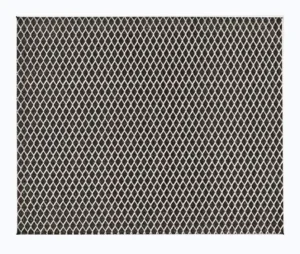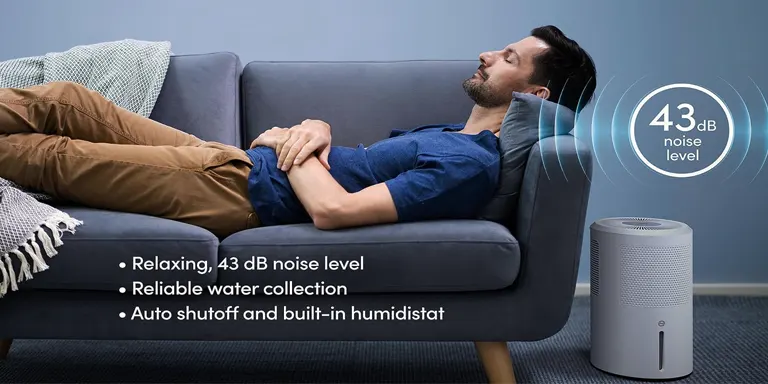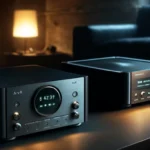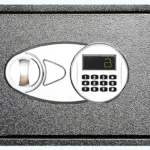A dehumidifier is great for reducing moisture, but what if it’s blowing hot air? This unexpected heat can make your home feel stuffy and uncomfortable. There are practical ways to fix this issue and restore your indoor comfort. Whether it’s clogged filters, incorrect settings, or an overworked unit, several factors could be at play. In this article, we’ll explore effective methods to stop your dehumidifier from overheating.
In This Article
What Temperature Should The Air Be Coming Out Of A Dehumidifier?
Many people are puzzled by the temperature of the air coming from their dehumidifier, especially when it doesn’t seem as cool as expected. Understanding why the air feels warmer can help you get the most out of your device, making your home environment more comfortable.
Understanding How a Dehumidifier Works
To grasp the ideal air temperature from a dehumidifier, it’s essential to understand how it functions. A dehumidifier pulls in moist air, removes excess moisture, and expels drier air back into the room. During this process, heat is naturally generated due to the dehumidifier’s internal compressor and condenser coils. This heat isn’t a flaw; it’s simply a byproduct of the moisture removal process. Go here to learn more about the dehumidifier.
Typical Air Temperature from a Dehumidifier
The air coming out of a dehumidifier is generally warmer than the surrounding room air. On average, the air can be about 10-15°F (5-8°C) warmer than the room temperature. For example, if your room is 72°F (22°C), the air from the dehumidifier could feel around 82-87°F (28-30°C). This slight increase helps the unit efficiently remove moisture, keeping humidity levels in check.
Why Does the Air Feel Warm?
The warm air is due to the energy exchange inside the dehumidifier. As moist air passes over the cold coils, it condenses, releasing heat in the process. This warm, dry air is then blown back into your space. This increase in temperature is a sign that your dehumidifier is working correctly, not a malfunction.
What If the Air Feels Too Hot?
If the air from your dehumidifier feels excessively hot, it may indicate a problem. This could be due to blockages, dirty filters, or an overworked compressor. Regular maintenance, such as cleaning the filters and ensuring proper ventilation, can help keep your dehumidifier running smoothly and prevent overheating.
Optimizing Your Dehumidifier’s Performance
To ensure your dehumidifier operates efficiently, position it in a well-ventilated area. Avoid placing it near heat sources or direct sunlight, which could affect its performance. Regularly clean the coils and filters to maintain optimal airflow and prevent the unit from working harder than necessary.
How to Fix Dehumidifier From Blowing Hot Air?
Let’s dive into the common reasons why dehumidifiers blow hot air and how you can troubleshoot and fix it yourself.
Check the Room Temperature
Dehumidifiers work best in moderate temperatures, typically between 65°F and 85°F. If the room is too warm, your dehumidifier may struggle, resulting in warm air output. Ensure the space isn’t overly hot, or consider moving the dehumidifier to a cooler location.
Inspect the Air Filter
 A clogged air filter is often the culprit. When dust and debris block airflow, the unit has to work harder, leading to overheating. Check your filter regularly and clean or replace it as needed. A clean filter helps your dehumidifier run efficiently, reducing hot air output.
A clogged air filter is often the culprit. When dust and debris block airflow, the unit has to work harder, leading to overheating. Check your filter regularly and clean or replace it as needed. A clean filter helps your dehumidifier run efficiently, reducing hot air output.
Examine the Coils for Frost or Dirt
Dirty or frosted evaporator coils can disrupt the cooling process, causing the dehumidifier to blow warm air. Turn off the unit, unplug it, and allow it to defrost if ice is present. Clean the coils gently using a soft brush or cloth. Regular maintenance can prevent these issues from recurring.
Ensure Proper Ventilation Around the Unit
Dehumidifiers need space to function correctly. If positioned too close to walls or furniture, airflow becomes restricted, causing the unit to overheat. Place your dehumidifier at least 12 inches away from any obstacles to promote proper ventilation and cooling.
Check the Fan Motor
A malfunctioning fan motor can lead to poor airflow, causing the unit to overheat and expel hot air. Listen for unusual noises or vibrations, which could indicate a problem. If the fan motor is faulty, it might need professional repair or replacement.
Test the Humidity Control Settings
Incorrect settings can cause the unit to run continuously, which might lead to overheating. Ensure that the humidity level is set correctly, typically between 30-50% for most environments. Adjusting these settings can prevent your dehumidifier from overworking and blowing hot air.
Inspect the Refrigerant Levels
Low refrigerant levels can impair the cooling function of your dehumidifier, causing it to release warm air. This issue often requires professional assistance, as handling refrigerants is complex and regulated. A technician can check and recharge the refrigerant if necessary.
Clean the Condenser Coils
Over time, dust and grime can accumulate on condenser coils, reducing their efficiency. Unplug the unit, and clean the coils using a vacuum with a brush attachment or a soft cloth. Keeping these components clean can significantly improve your dehumidifier’s performance.
Reset the Unit
Sometimes, a simple reset can resolve minor glitches. Turn off the dehumidifier, unplug it, and wait a few minutes. Plug it back in and restart the unit. This process can help clear any temporary issues affecting the system’s performance.
Consider the Age of Your Dehumidifier
If your dehumidifier is old, wear and tear might be to blame. Older units lose efficiency over time, leading to problems like overheating. In such cases, it might be more cost-effective to invest in a new, energy-efficient model rather than repair an outdated unit.
How do I keep my room cool with a dehumidifier?
You are advised to read the following statements patiently to get the answer to the question.
Why Use a Dehumidifier?
A dehumidifier removes excess moisture from the air, creating a more pleasant atmosphere. Humidity makes a room feel warmer than it actually is, which can be uncomfortable, especially during hot seasons. By reducing humidity levels, dehumidifiers help you feel cooler without necessarily lowering the temperature.
How Does a Dehumidifier Cool Your Room?
While dehumidifiers don’t lower the air temperature directly, they make your space feel cooler. Moist air traps heat, so when you reduce the moisture, the air feels drier and lighter. This effect can make your room feel several degrees cooler. Dehumidifiers also prevent mold growth and musty odors, adding to the comfort of your space.
Steps to Effectively Cool Your Room with a Dehumidifier
Choose the Right Size
Size matters. A dehumidifier that’s too small won’t effectively reduce humidity. Check your room size and select a unit with the right capacity. For large rooms, opt for a high-capacity model that can handle more moisture.
Position the Dehumidifier Correctly
Place it centrally or in the most humid area of the room. Ensure it’s away from walls or furniture, allowing for proper airflow. A well-placed dehumidifier works more efficiently, enhancing its cooling effect.
Set the Humidity Level
Aim for a humidity level between 40-50%. This range feels comfortable and prevents the air from becoming too dry. Most dehumidifiers have adjustable settings, so you can fine-tune them to your preference.
Close Windows and Doors
To maintain a cool, dry environment, keep windows and doors closed. Open windows allow humid air to enter, reducing the dehumidifier’s effectiveness. Create a sealed environment for the best results.
Maintain Your Dehumidifier
Regularly clean the filter and empty the water tank. A clean dehumidifier operates more efficiently, maintaining optimal humidity levels. Routine maintenance ensures your dehumidifier continues to function at its best.
Use Fans for Better Circulation
Enhance the cooling effect by using ceiling or floor fans alongside your dehumidifier. Fans help circulate the dry air, making the room feel cooler faster. This combination can improve comfort without the need for excessive air conditioning.
Also Read: Do I Need a Dehumidifier in My Gun Safe





